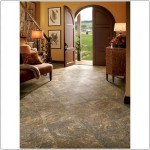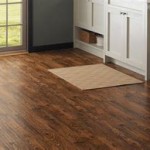A Comprehensive Guide To Selecting Ceramic Tile Flooring For Bathroom
Ceramic tile flooring is a popular choice for bathrooms due to its durability, water resistance, and style versatility. However, with so many options available, selecting the right ceramic tile for your bathroom can be overwhelming. This guide provides a comprehensive overview of factors to consider when choosing ceramic tile flooring for your bathroom, ensuring you make an informed decision that meets your needs and enhances the space.
1. Understanding Tile Types and Their Properties
Ceramic tiles are broadly classified into three main types: ceramic, porcelain, and quarry tiles. Each type possesses unique characteristics influencing its suitability for bathroom applications.
Ceramic tiles are generally less expensive than porcelain tiles and are available in a wide range of colors, patterns, and finishes. They are often glazed, providing a smooth surface that is easy to clean. However, ceramic tiles are more porous than porcelain tiles, making them susceptible to water absorption and staining.
Porcelain tiles are denser and more durable than ceramic tiles. They are highly resistant to moisture, scratches, and stains, making them ideal for high-traffic areas like bathrooms. Porcelain tiles also offer greater versatility in terms of design, as they can mimic natural materials like stone and wood.
Quarry tiles are made from clay that is fired at a lower temperature than ceramic and porcelain tiles. They are known for their rustic appearance and their durability. Quarry tiles are less common in bathrooms due to their porous nature and potential for water absorption.
2. Choosing the Right Tile Size and Shape
The size and shape of your bathroom tiles can significantly impact the overall aesthetic and functionality of the space. Smaller tiles can make a small bathroom appear larger, while larger tiles can create a more spacious feel.
Consider the following factors when choosing tile size and shape:
- Bathroom size: Smaller bathrooms benefit from smaller tiles, while larger bathrooms can accommodate larger tiles.
- Layout: Different tile shapes and sizes can create different visual effects. For example, rectangular tiles can create a sense of length, while square tiles can make a space feel more expansive.
- Grout lines: Smaller tiles will have more grout lines, which can create a busier appearance. Larger tiles will have fewer grout lines, creating a more minimalist aesthetic.
3. Evaluating Tile Durability and Water Resistance
Bathroom flooring endures constant exposure to moisture, foot traffic, and potential spills. Choosing durable and water-resistant tiles is crucial for maintaining a safe and hygienic environment.
Durability is measured by the tile's ability to withstand abrasion, impact, and scratches. Porcelain tiles generally offer greater durability than ceramic tiles.
Water resistance is assessed by the tile's water absorption rate. Porcelain tiles typically have a lower water absorption rate than ceramic tiles, making them more suitable for bathroom environments. The water absorption rate is usually indicated by a number on the tile's packaging. Look for tiles with a low water absorption rate, ideally less than 0.5%.
4. Assessing Tile Slip Resistance
Slip resistance is a critical consideration for bathroom flooring, especially in areas prone to moisture, like showers and tubs. Slippery tiles can pose a significant safety hazard.
Tile slip resistance is measured using the Coefficient of Friction (COF) value. The higher the COF value, the greater the slip resistance. Tiles with a COF of 0.42 or higher are generally recommended for bathroom flooring. Consider choosing tiles with a higher COF value for areas with frequent water exposure, like showers and tubs.
5. Exploring Tile Finish Options
Tile finish refers to the surface texture of the tile. Finish options range from smooth and glossy to textured and matte, each offering a unique visual appeal and functional properties.
Glossy tiles reflect light, creating a brighter and more spacious feel. However, they can be more prone to showing dirt and scratches.
Matte tiles have a less reflective surface, minimizing the appearance of dirt and scratches. They offer a more understated and elegant aesthetic.
Textured tiles provide a rougher surface, enhancing slip resistance, but they can be more difficult to clean.
6. Understanding Grout and its Importance
Grout is the material used to fill the spaces between tiles, providing structural support and preventing water infiltration. The color and type of grout can significantly impact the overall appearance of your bathroom floor.
Consider the following factors when choosing grout:
- Color: Grout color can complement or contrast the tile color, creating a desired effect.
- Type: Epoxy grout is more durable and water-resistant than cement-based grout, making it an ideal choice for bathroom floors.
- Maintenance: Choose grout that is easy to clean and maintain, considering the level of foot traffic and potential spills.
7. Final Thoughts
Selecting the right ceramic tile flooring for your bathroom involves careful consideration of factors such as tile type, size, durability, slip resistance, and finish. By understanding these factors and making informed decisions, you can create a bathroom that is both stylish and functional, ensuring a safe and comfortable environment for years to come.

A Comprehensive Guide To Choosing Porcelain Bathroom Floor Tiles Flooring And Design

Choosing The Best Flooring For Your Bathroom A Comprehensive Guide By Flooringking King
.jpg?strip=all)
The Ultimate Guide To Choosing Floor Tiles Tile

A Guide To Choosing Bathroom Tiles Beautiful Homes

Types Of Porcelain Tiles For Bathrooms Complete Guide To Options

The Complete Guide To Select Right Tile For Your Project Rubi Blog Usa

Best Flooring For Bathrooms In 2024 Badeloft

Choosing Bathroom Floor Tiles For Style Durability Vivid And Design

Bathroom Tile Guide For A Stunning Look In Every Home

How To Select Floor Tiles Complete Selection Guide
See Also







